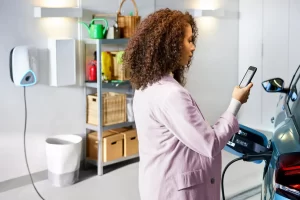
It’s urgent now, the need to address global carbon emissions. The Word Economic Forum (WEF) estimates they increased by 1% in 2022, hitting a new high of 36.6 billion tons of CO2. And as we address ways to help reduce our emissions, it’s often difficult to know how and where to start transitioning to a more sustainable future. But as the WEF president has said, “the cost of inaction far exceeds the cost of action.”
There are several effective decarbonization strategies to consider – but did you know the most effective method is developing and implementing environmental standards and regulations?
Without standards – if private companies “filled the void” with their own metrics to demonstrate good behavior – the results would be inconsistent, difficult to measure, and nearly impossible to compare with any benchmark.
Environmental standards allow us to monitor, measure, and communicate our results and respond to their transformative impacts.
Standards are the major driver of change
Environmental impact calculations, including CO2, require concise references from accurate and reliable data. Such standards help ensure consistency and interoperability, leveling the playing field for everyone. They also establish a toolbox that can be easily translated into product-specific rules (or PSR). Reporting on the results also provides peace of mind, as ‘green’ communication can be challenging to understand; a common framework and terminology always provide the most accurate and transparent reporting. For example:
- IEC 63366 Product Category Rules (PCR), based on CENELEC EN 50693, currently proposed in IEC/TC111 Working Group, defines rules for electronic and electrical products and systems (EEPS). This is a key standard for the lifecycle assessment approach and provides mapping for development at the product standard level. Per product category, PSRs provide more accuracy through additional rules (e.g., for high-voltage switchgear and controlgear IEC TS 62271-320 or for low-voltage switchgear and controlgear IEC TS 63058).
- ISO 14025 establishes principles for the use of environmental information. While it’s mostly intended for business-to-business communication, it can also be used to communicate with customers.
- PEPecopassport® is an international reference program that provides methods and rules for drafting Product Environmental Profiles (PEP) and showing the environmental footprint of a product’s life cycle assessment (LCA). The PCR is in accordance with EN 50693, completed by 18 PSR. For low-voltage electrical switchgear and controlgear solutions, the environmental aspects are covered by PSR0005 aligned with IEC TS 63058.
Yet to be developed are standards at the product level, beginning with conformity assessment frameworks where peer assessment helps to certify reliable and comparable results.
We must secure standardized approaches to avoid emissions
Measuring avoided emissions allows us to accurately assess our decarbonization efforts. It also helps set realistic targets for emissions reductions and allocate resources accordingly. Clear communication around these efforts encourages more of us to adopt sustainable practices and policies.
- IEC 63372 (currently in development) provides clear guidance for quantifying and communicating GHG emissions, including emission reductions and avoided emissions from electrical and electronic products, services, and systems.
The principles and methodologies developed in this standard will help secure unbiased benchmarks and comparisons and can be applied to product-specific rules (and even avoid greenwashing).
New product standards: material efficiency and the circular economy
Material efficiency seeks to minimize the raw materials used during the product design and production process while maintaining the product’s quality and functionality. The aim – using fewer resources, using recycled, sustainable materials, and minimizing a product’s environmental impact – is to reduce waste and improve sustainability. Current standards include:
- CENELEC-provided EN 4555x series standards to help introduce eco-design requirements on the material efficiency of energy-related products via horizontal methods
- In 2023 CENELEC will focus on developing EN 45560 for the circular design of products. Its goal is to provide specific guidance for integrating circularity into an organization’s product design and development and how to transition circular economy ambitions into strategies.
- Examples of products that bring the circular economy to life include smart circuit breakers containing recycled materials or protection devices made from 100% recycled polyamide 6 (PA6) from end-of-life tires.
To support circular business models and foster eco-design, standards agencies must develop new product standards to quantify environmental impacts, push for product maintenance and services as a key lever in circular economies, and guide standards for verified-safe, onsite facility-tested extended or remanufactured products for the circular economy.
360-degree environmental standards are needed
Accurately quantifying our carbon emissions, fostering a circular economy, and decarbonizing the world at scale require standardized, well-considered regulations that provide the methods and guidance for benchmarking and measuring emissions and clear quantification and communication guidelines. They also help motivate companies to improve their environmental, social, and corporate governance (ESG) and to consider the environmental aspects in every stage of their product development process.
For more information, download our Back to 2050 report, discussing the energy transition, consumption patterns, and how circular ecosystems require optimizations from the design to the end of life.




Conversation
very Informative Blog. Thankyou for sharing such innovative view to such sustainability related topic. Environmental impact calculations, including CO2, require concise references from accurate and reliable data. Such standards help ensure consistency and interoperability, leveling the playing field for everyone. They also establish a toolbox that can be easily translated into product-specific rules (or PSR). Reporting on the results also provides peace of mind, as ‘green’ communication can be challenging to understand.